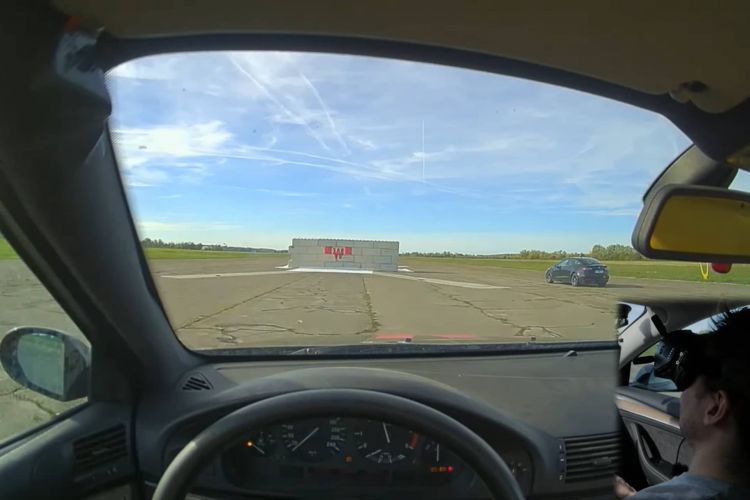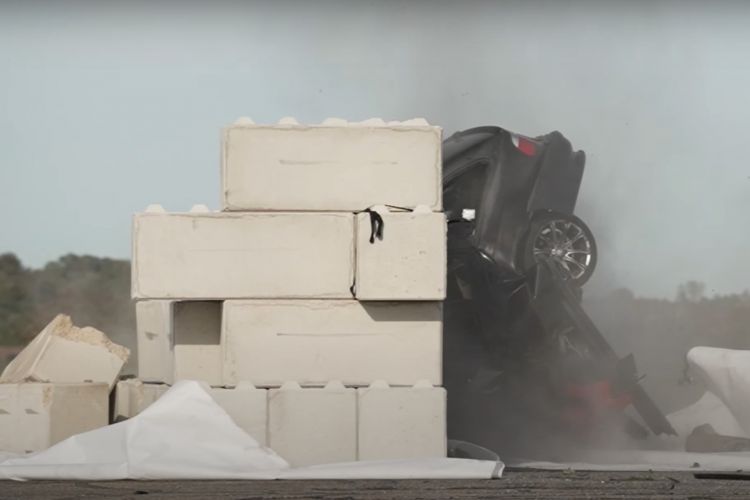Despite the fact that the images are not suitable for all audiences, the video that accompanies these lines accumulates more than 2.5 million views in three days. The reason? Has become A perfect road safety lesson that shows drivers what a high speed crash into a wall is like.
The recording stars a BMW 5 Series E39 Touring, driving, remotely, against a solid wall: obviously, no one was injured. The idea of Vilebrequin (the YouTube channel behind the test) was to portray what happens when a vehicle of a certain age travels at a high speed, but far from its maximum figures. And also its consequences.
The proof
The stage is a track one kilometer long. The distance was not enough for the vehicle to reach 200 km/h, so they decided to do the test at a lower speed than initially planned: the BMW 5 Series Touring is driving at 150km/h until he crashed directly into a wall. That speed is three times higher than that used in a normal crash test: EuroNCAP does its tests at 50 km/h, while in the United States they are carried out at 56.3 km/h.
The famous ‘Elephant Effect’
The video highlights the danger of the ‘Elephant Effect’. As the General Directorate of Traffic has explained on numerous occasions, at a speed of 60 km/h, a passenger weighing 75 kilos and traveling without a belt would hit the front seat with a force equivalent to the weight of a 4.2-tonne elephant.
And it is that when one of the passengers in the rear row travels without this safety element and there is a sudden stop, his weight multiplies and hits the person in front with an equivalent force (depending on his weight and the vehicle speed) to the weight of a pachyderm.
The consequences of G forces
Another point to take into account in high speed accidents is the fact of colliding at such a high speed against an immovable object: this implies a drastic reduction in speed, which implies G forces that are too high for the human body supports them. In the impact shown in the video a maximum of 64 G is reached: more than enough to cause life-threatening injuries to any human being.
In these situations, surviving is quite a stroke of luck. Even if the BMW 5 Series E39 had remained intact after the crash, the people inside would have experienced a sudden deceleration from 150 to 0 km/h. In those conditions, what you do or what happens to the car is irrelevant: the occupants would not have survived upon impact.
A lesson in road safety
It is true that the shock staged one of the worst accidents that a vehicle can suffer because it involves driving faster than the speed limit on a motorway in any European country (German Autobahns aside) and hitting a wall without making the slightest gesture to slow down. However, no matter how bizarre the coincidence of all these conditions may seem, it could happen: on a highway or motorway, the risk of being hit from behind by someone driving above the established limits is real.
It never hurts to be aware of the consequences of driving at these levels on the road: they not only endanger us, but also the rest. And it is that if, really, you want to drive a vehicle much stronger than what is allowed… the circuits will always remain.






